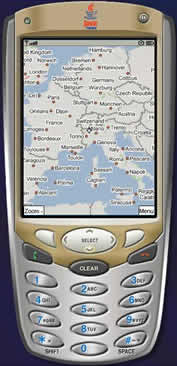 For those who have better thing to do with their lives than fanatically watch every twist and turn of online technology, or if you’re living outside the US of A, you may well not have been using Google’s recently launched Google Local For Mobile (GLM)- or even have heard of it.
For those who have better thing to do with their lives than fanatically watch every twist and turn of online technology, or if you’re living outside the US of A, you may well not have been using Google’s recently launched Google Local For Mobile (GLM)- or even have heard of it.
Here’s the heads-up – it’s a service that runs through a downloaded Java application on a number of mobile phones, giving on-the-move mapping, route planning and local information.
As with their browser-based mapping services, you can view either a map, satellite view or a overlaid combination of the two.
Superimposed on this is local business information, currently, but we can see that with Google’s penchant for adding advertising to everything, this may be soon added to.
 Yesterday we revealed how GLM has GPS hidden inside, but isn’t currently enabled and it was while playing around with this, we discovered another interesting undocumented feature.
Yesterday we revealed how GLM has GPS hidden inside, but isn’t currently enabled and it was while playing around with this, we discovered another interesting undocumented feature.
Google are telling everyone that it just covers the US. Quoting from their FAQ
Does Google Local for mobile work everywhere?
Not yet. Local for mobile is currently available in the US only. We’re working to increase its availability as soon as possible.
We found that with a little playing around, you can investigate around Europe and plot routes using the click to select mapping.
So, how do you explore Europe?
Here’s how we discovered it, there may be other ways.
- Download the app to your mobile using the ‘Other’ mobile provider option
- Select a handset close to your own (we’ve found that it doesn’t need to be your exact handset)
- Download and run the app
- Shift to satellite view and you’ll see the whole of the USA
- Scroll right towards Europe
- Zoom in to your desired Euro location
- Select 2 (Directions) to find route
- Use ‘Select point on map’ to select the starting point, then finishing point
- The route will be calculated
- Click 3 to start stepping through your route
- Have fun
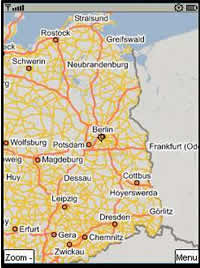 More detail than the browser version
More detail than the browser version
The discovery doesn’t end there. After chatting further to Cristian Streng, we now also realise that there’s detail on the Mobile version that isn’t available via the ‘normal’ Web-based Google Maps.
To illustrate it, he sent us some screen grabs showing mapping data of Germany that is currently only available in GLM.
If you fancy having a look around too, but want to save the mobile phone data charges, we’ll pass on a tip from Cristian. He very sensibly did his investigation using a PC-based Java Virtual Machine rather than spending money on GPRS charges. Smart.
If you didn’t know it already, this makes is clear that software is there to play with, and if you do, you may find lots of areas and features that you’re officially told aren’t there. So, go, explore.
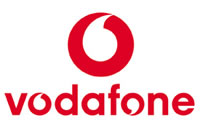 Intertrust must have though that all of the xmases came at once on the day Vodafone confirmed their licensing deal. It’s not every day that the World’s largest mobile operator signs a deal like that with you.
Intertrust must have though that all of the xmases came at once on the day Vodafone confirmed their licensing deal. It’s not every day that the World’s largest mobile operator signs a deal like that with you.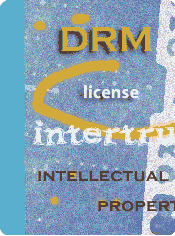 The Vodafone deal goes well beyond these basics and licenses all of the technologies and patent that Intertrust have available.
The Vodafone deal goes well beyond these basics and licenses all of the technologies and patent that Intertrust have available. Both Vodafone and Intertrust declined to reveal the value of the transaction, but given the need for separate deals with the handset companies, it may be here that Intertrust make most of their money. This will not be optional if the handset manufacturers want to be on the Vodafone service and offer content.
Both Vodafone and Intertrust declined to reveal the value of the transaction, but given the need for separate deals with the handset companies, it may be here that Intertrust make most of their money. This will not be optional if the handset manufacturers want to be on the Vodafone service and offer content. Following the BBC confirmation of High Definition Television (HD) trials for 2006, all of a sudden it feels like there’s a plethora of High Definition services and trials in the UK next year.
Following the BBC confirmation of High Definition Television (HD) trials for 2006, all of a sudden it feels like there’s a plethora of High Definition services and trials in the UK next year. Speaking at the same event, Richard Freudenstein, CEO, BSkyB, was careful not to mention what the monthly subscription will be for HD on Sky when it launches. He spent his time talking up the platforms’ HD bouquet that will include Sky One, sports and movies with an HD Sky Plus box and plenty of storage capacity.
Speaking at the same event, Richard Freudenstein, CEO, BSkyB, was careful not to mention what the monthly subscription will be for HD on Sky when it launches. He spent his time talking up the platforms’ HD bouquet that will include Sky One, sports and movies with an HD Sky Plus box and plenty of storage capacity. Confusion still reigns
Confusion still reigns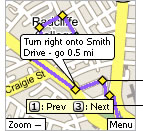 Despite their emphatic denial, Google appear to be planning to bring GPS to the recently announced Google Local For Mobile.
Despite their emphatic denial, Google appear to be planning to bring GPS to the recently announced Google Local For Mobile. The GPS feature could well be waiting for a second release of the service, or waiting for next-gen handsets with aGPS built into them, to become more widely used.
The GPS feature could well be waiting for a second release of the service, or waiting for next-gen handsets with aGPS built into them, to become more widely used. Ofcom, the UK uber-regulator, has today announced that they have removed the licensing restrictions on the frequency that radio frequency identification(RFID) tags use.
Ofcom, the UK uber-regulator, has today announced that they have removed the licensing restrictions on the frequency that radio frequency identification(RFID) tags use. Accton Technology has unveiled a Skype-enabled Wi-Fi phone, the SkyFone WM1185-T in Tokyo.
Accton Technology has unveiled a Skype-enabled Wi-Fi phone, the SkyFone WM1185-T in Tokyo. This is exactly the type of deal that we thought that Skype would be doing and fits perfectly into our thought of
This is exactly the type of deal that we thought that Skype would be doing and fits perfectly into our thought of  It has taken the Bluetooth headset industry a remarkably long time to twig that we don’t want to use one headset for listening to music, and then frantically rip it off to use another Bluetooth headset for answering the phone. Anycom has the one… at a price.
It has taken the Bluetooth headset industry a remarkably long time to twig that we don’t want to use one headset for listening to music, and then frantically rip it off to use another Bluetooth headset for answering the phone. Anycom has the one… at a price. And the icing on the cake: a Bluetooth audio gateway. Without further details (actual hands-on reviews!) this is probably going to seem more wonderful than it can in reality be: but what we’re hoping it will do, is allow you to plug several audio inputs into it, and switch between them – from landline phone to Skype, from Skype to iPod, from iPod to mobile phone.
And the icing on the cake: a Bluetooth audio gateway. Without further details (actual hands-on reviews!) this is probably going to seem more wonderful than it can in reality be: but what we’re hoping it will do, is allow you to plug several audio inputs into it, and switch between them – from landline phone to Skype, from Skype to iPod, from iPod to mobile phone. The commercial rivalry between two UK online retailers has spilt over into the world of advertising, or more precisely the heady world of UK advertising adjudication, run by the Advertising Standards Authority.
The commercial rivalry between two UK online retailers has spilt over into the world of advertising, or more precisely the heady world of UK advertising adjudication, run by the Advertising Standards Authority.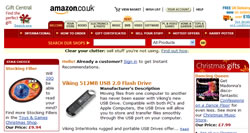 The ASA batted the first complaint aside, but felt the second held water despite Tesco putting up the follow argument. Their long winded thinking can be cut down to … As no single CD or DVD was priced over £19 (thank goodness – our addition), to qualify for the Amazon free delivery, it entailed ordering more than one item.
The ASA batted the first complaint aside, but felt the second held water despite Tesco putting up the follow argument. Their long winded thinking can be cut down to … As no single CD or DVD was priced over £19 (thank goodness – our addition), to qualify for the Amazon free delivery, it entailed ordering more than one item.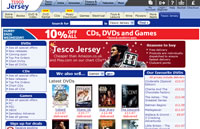 But this jiggery pokery didn’t get them off the hook and the ASA found against them.
But this jiggery pokery didn’t get them off the hook and the ASA found against them. Netgear have released a new wireless access points with claimed speeds of up to 240Mb/s, beating that of wired networks of 100Mb/s (though modern Ethernet wired networks can now go up to 1000Mb/s or 1Gb/s and faster).
Netgear have released a new wireless access points with claimed speeds of up to 240Mb/s, beating that of wired networks of 100Mb/s (though modern Ethernet wired networks can now go up to 1000Mb/s or 1Gb/s and faster).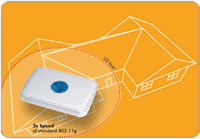 Speed gains using clever encoding
Speed gains using clever encoding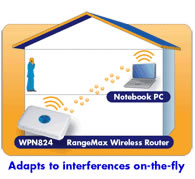 The IEEE (the body that sets the 802.11 standards) are working on the next phase of standards which will incorporate MIMO and other techniques, but they are not due for a while and it will take manufacturers a while longer to then make systems that conform to those new specs. There are no guarantees that any kit now will be upgradeable to those new standards.
The IEEE (the body that sets the 802.11 standards) are working on the next phase of standards which will incorporate MIMO and other techniques, but they are not due for a while and it will take manufacturers a while longer to then make systems that conform to those new specs. There are no guarantees that any kit now will be upgradeable to those new standards. Grokster, the online music sharing service, much legally embattled, has decided to shut the service and pay $50 million to settle claims against it.
Grokster, the online music sharing service, much legally embattled, has decided to shut the service and pay $50 million to settle claims against it. There is a plan to launch a service that they say will be a “safe and legal service” under the name Grokster 3G.
There is a plan to launch a service that they say will be a “safe and legal service” under the name Grokster 3G.